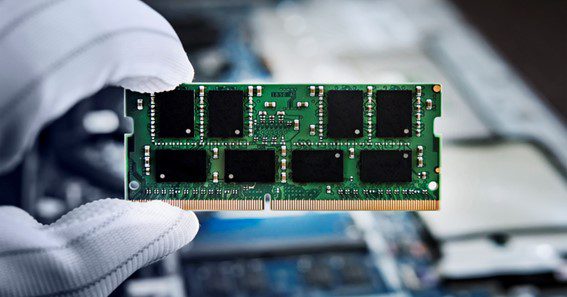Memory (RAM) comes in different sorts. The distinctions are because of the capacity of memory and the innovation of memory and other PC equipment. You can also have a look at memory chip to know their different types.
To decide the correct sort of memory for your PC, utilize the Crucial? Advisor ? device or the System Scanner apparatus. These devices will assist you with figuring out which memory modules are viable with your PC, with choices for your memory prerequisites and spending plan. Continue to peruse to get familiar with those alternatives.
Sram, Dram, And Ecc
There are two groupings of static arbitrary access memory (SRAM) and dynamic access memory (DRAM) memory. With SRAM, information is put away utilizing a six-semiconductor memory cell. SRAM is frequently utilized as storage memory for the processor (CPU) and is typically not client replaceable.

Measure stores information utilizing a semiconductor and capacitor pair, framing a DRAM cell. The measure is more affordable to create, however marginally more slow than SRAM. Most client replaceable memory modules are DRAM.
Blunder Correction Code (ECC) is a kind of DRAM that has an additional cell to recognize and fix irregular shortcomings. ECC memory is client replaceable, yet should be viable with other PC equipment.
Information Rates: Ddr Explained
SDRAM (simultaneous powerful irregular access memory) was created in light of sped up in other PC parts. Beforehand, memory must be offbeat, which means it worked freely of the processor. Simultaneous memory synchronizes the memory module’s reactions with the framework transport.
As other PC segments sped up, memory speed additionally expected to increment. The twofold information rate, or DDR, was created, and the past procedure is known as the single information rate or SDR. DDR was quicker and utilized less energy than SDR. DDR memory moves information to the processor on both the rising and falling edges of the clock signal. A clock signal is made both underneath or more.
Utilizing the two beats to move information makes twofold information rate memory essentially quicker than single information rate memory, which utilized just one edge of the clock sign to move information. Double information rate is not the same as double channel memory
Memory innovation keeps on creating. The up-and-coming age of memory, DDR2, is quicker and utilizes less energy than the first DDR. DDR3 and DDR4 proceeded with this pattern. Each progressive age is quicker and utilizes less energy. Memory guidelines are directed by JEDEC, the United Electron Devices Engineering Council, a free semiconductor designing exchange association and normalization body.
Memory should be viable with different parts in a PC framework. Commonly, segments are produced at the most elevated level at the hour of production, yet with the assumption that innovation will keep on evolving. To keep clients from embeddings incongruent memory, the modules are genuinely unique for every memory innovation age. These actual contracts are standard in the memory business.
One justification for industry-wide normalization in memory is that PC makers need to know the electrical boundaries and actual size of the memory to be introduced in their PCs. Since the electrical boundaries are diverse for every age of memory, the actual size of the memory changes to keep erroneous memory from being introduced in the PC. PCs can just utilize a similar age of memory for which they are planned.
Slam Speed
The numbers showing up after the “DDR” and the age pointer are the information move rates for each second of the module. Since the twofold information rate moves information to both rising and falling edges of the clock cycle, the DDR3-800 is estimated utilizing 400 clock cycles on a 1066 MHz input/yield clock. If it’s not too much trouble, note that Hertz is an estimation of the cycle each second, not an estimation of cycle speed.
There is additionally an industry name that demonstrates the hypothetical transmission capacity of the module, for instance, “PC3-6400”. Transmission capacity is determined by taking exchanges each second and increasing by eight (DDR3 moves information to a transport that is 64 pieces wide, and in light of the fact that one byte is eight pieces, it is eight bytes of information for every exchange).
In all cases, higher numbers demonstrate more prominent speed.
Conclusion
In the event that you need to redesign your PC’s memory or assemble your own PC, you need to ensure that the memory is viable with different segments of your PC. You ought to pick the correct memory innovation prior to taking a gander at speed or some other highlights.

As the editor of the blog, She curate insightful content that sparks curiosity and fosters learning. With a passion for storytelling and a keen eye for detail, she strive to bring diverse perspectives and engaging narratives to readers, ensuring every piece informs, inspires, and enriches.









